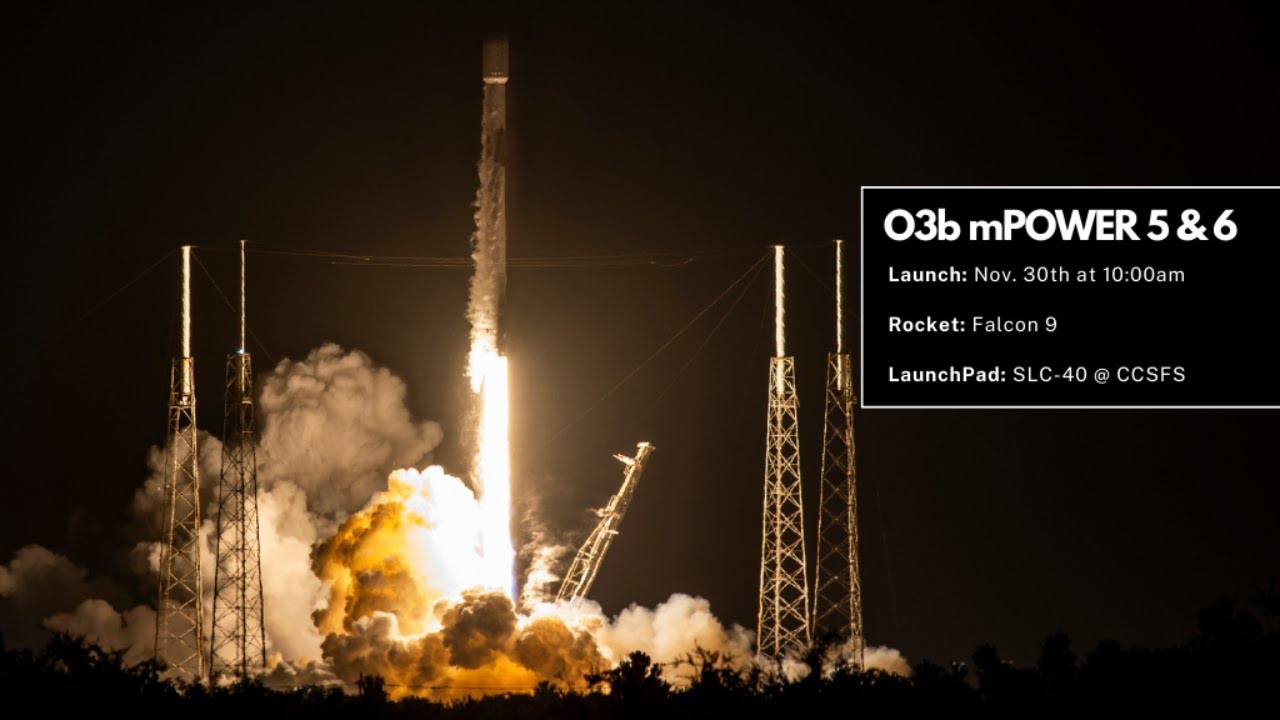SpaceX plans to launch two O3b mPOWER satellites into an 8000 km equatorial (0°) medium Earth orbit in an 89 minute launch window opening on 2023-11-12 at 21:08 UTC. The launch will be from Space Launch Complex 40 at Cape Canaveral Space Force Station in Florida. The first stage booster, B1076, will be making its ninth flight, after a turnaround time of 38 days since its last mission. The booster will land on the A Shortfall of Gravitas drone ship in the Atlantic Ocean. Weather is forecast as 70% favourable for launch. If the launch is postponed, there is a backup opportunity the next day, 2023-11-13, at the same time.
The payload is the third pair of satellites of the second-generation O3b constellation, providing high-bandwidth communication to 96% of the Earth’s surface. The complete constellation will consist of 11 satellites with start of service scheduled for the third quarter of 2023. “O3b” originally stood for “Other 3 Billion”, based upon its goal of providing Internet access to the three billion people who lacked it. In 2016, O3b Networks was acquired by satellite operator SES S.A. of Luxembourg and is now a wholly-owned subsidiary. SES, originally named Société Européenne des Satellites, is best known for its Astra direct-to-home television broadcast satellites with 170 million customers in Europe.
Here is the pre-flight preview from Everyday Astronaut.
3 Likes
I suppose one can observe the great success of SpaceX in the fact that first stage booster landings have become apparently mundane. In fact, recalling the earliest launches of Vanguard, Redstone, Thor, Atlas, Titan, etc. - many of which ended in spectacular disassemblies at various stages on the way up - such precisely-controlled landings of tall cylinders with centers of gravity who knows where, were until very recently, unimaginable possibilities; now become ordinary.
3 Likes
Fortunately, when landing an almost-empty rocket stage, almost all of the weight is in the engines at the bottom, which is the first thing encountering the airflow during descent through the atmosphere. This, combined with the grid fins that extend from near the top of the stage after separation from the second stage, makes the descending stage pretty aerodynamically stable during descent, with the grid fins providing mostly steering toward the target rather than active stability.
Generally, the rule for any body passing through the air is that it will be stable as long as the centre of gravity is forward of the centre of pressure with respect to the air flow. This is why some rockets have fins near the bottom: to move the centre of pressure back and achieve passive stability (restoration from a perturbation off course).
My guess is that the reason the landing legs are extended at what feels like the last possible moment is that the extended landing legs move the centre of pressure much closer to the centre of gravity, in doing so reducing static stability. But if you deploy the landing legs when you’ve almost come to a stop, air flow has less influence on the rocket and gimbaling the landing engine is enough to keep it upright in the final moments before touchdown.
3 Likes
